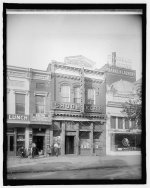dirtfisher1127
Full Member
- Aug 8, 2011
- 173
- 68
Shoomaker's flask
I was hoping someone could help me evaluate the relative scarcity and possibly a value for the flask shown in the pics.
Thanks!
I was hoping someone could help me evaluate the relative scarcity and possibly a value for the flask shown in the pics.
Thanks!








